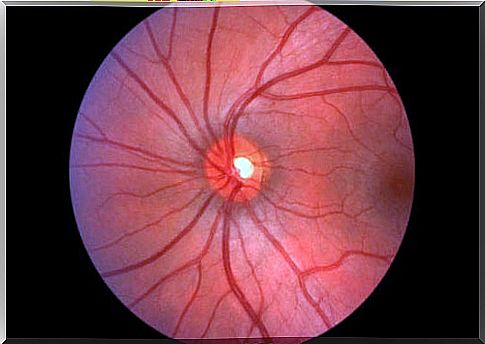What Is Papilloedema For A Condition?

Papilloedema is a disorder that occurs in the eye. It consists of an inflammation in the area of the optic nerve closest to the retina due to an increased pressure in the skull.
In some cases, this disorder is asymptomatic, but it affects the vision of others. The problem is that behind this disease can hide serious health problems such as brain tumors. In this article, we will therefore explain everything you should know.
What is papilloedema?
Papilloedema, as we have already mentioned, consists of inflammation of the papilla of the eye. This most commonly occurs in both eyes at the same time in the form of bilateral edema around the optical disc.
This disorder is caused by high pressure in the skull. The skull is a fixed bone structure in which we find various organs and substances. One of them is the cerebrospinal fluid. When something inside this box of bones increases in volume, it creates an increased pressure.
Papilloedema thus occurs when the pressure in the skull rises to over 200 millimeters of water. This increase may be due to a mass or a tumor. On the other hand, it may also be the result of an increase in the amount of cerebrospinal fluid.

Papilloedema occurs in the optic disc around the retina of the eye, which is visible using ophthalmic techniques.
Possible causes
As we have just pointed out, the cause of papilloedema is increased pressure in the skull. This is increased due to the amount of cerebrospinal fluid or the presence of abnormal masses in the brain.
These two situations are frequent in different scenarios. When we talk about abnormal masses, we are referring to tumors, pus from an infection or blood due to a hemorrhage.
According to a study published in the Journal of Neurology Supplements , the most common cause of papilloedema is idiopathic hypertension in the brain. This means that the pressure increases, but the underlying cause is unknown.
In other cases, it may be due to meningitis or acute encephalitis. An article in the Colombian Neurological Act confirms that it may also be a symptom of Wernicke-Korsakoff syndrome. Other less common origins are the following:
- Guillain-Barré syndrome.
- Hypervitaminosis A.
- Tumors in the spine.
- Vena cava superior syndrome.
What are the symptoms of papilloedema?
The symptoms of papilloedema vary. In the beginning, it is often asymptomatic, and specialists detect it only because they perform an examination of the eye. However, as it progresses, the damage to the fibers of the optic nerve begins to produce noticeable signs.
In that sense, papilloedema ends up affecting the person’s vision. The vision may become blurred, double or even disappear completely in a few seconds. Many patients also experience hypersensitivity to light.
Most episodes of vision loss last only a few seconds. In addition, high pressure in the skull also produces symptoms in itself. For example, it often involves headaches, nausea and vomiting.
The headache is more intense when you wake up in the morning, and tends to get better during the day. In cases where meningitis is the cause, neck stiffness can occur.
The treatment of papilloedema
The primary goal when treating papilloedema is to eliminate the cause of the increased pressure in the skull. It is important to keep in mind that this is a medical emergency. When the cause is idiopathic hypertension, the measures consist of reducing the cerebrospinal fluid.
In this case, doctors may prescribe diuretics such as mannitol and furosemide, according to the Chilean Magazine of Neurosurgery. In addition, weight loss can be beneficial as well as limiting fluid and salt.
To help the cerebrospinal fluid circulate properly , it is also a good idea to raise the headboard in the bed a bit. In the event that none of these things work, surgery may be necessary.
The surgical approach consists of performing a lumbar puncture to help drain some of the fluid. Lastly, if the cause is an infection or there is pus as a result of a bacterial growth, the patient should have antibiotics.

Headaches may accompany the signs of papilloedema and high pressure in the skull.
What to keep in mind
What we need to keep in mind regarding papilloedema is that it is a disorder that affects the optic nerve. It is produced by an increase in pressure in the skull, which responds to a variety of situations. Most cases have one thing in common: An increase in pressure inside the skull.
One of the most common causes is idiopathic elevated pressure in the skull. However, brain tumors, bleeding and infections can also lead to it. Papilloedema should be treated as a medical emergency to prevent damage to vision that cannot be restored.









